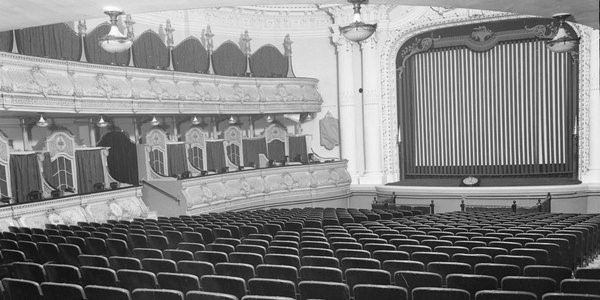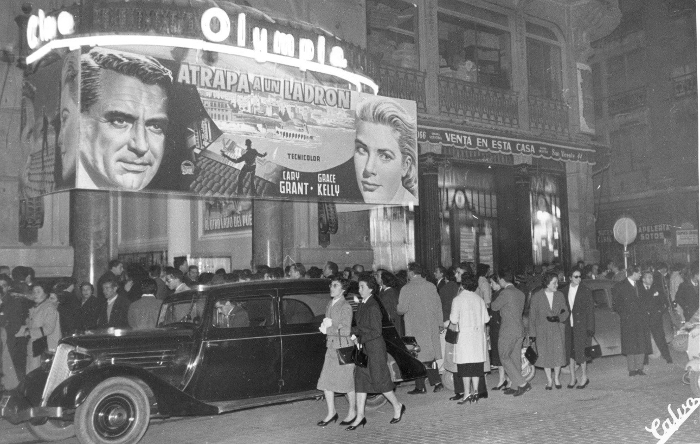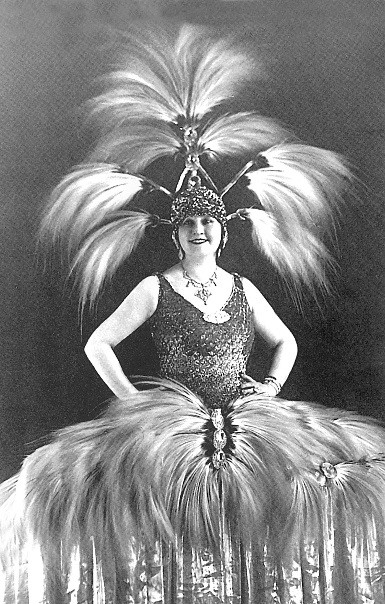
PRESENTATION
Right after a hundred years of non-stop activities, the Olympia Theatre has become a part of Valencian modern and contemporary cultural identity and of the sensitive imaginary of thousands of spectators who have enjoyed and fed their dreams and who have enriched their existence thanks to the creations offered, from the stage, to their eyes. Without their attendance to the theatre at San Vicente Street, generation after generation, it could not have enjoyed such an extraordinary longevity. A longevity which is not alien to the good practices of several business people who have been in charge of its exploitation. They are not known to the great public and they do not usually try to be in the news and pictures but it is important not to forget about them. It is them who compromise their money to satisfy the public’s aspirations and the ones who are put at risk if the blockbuster does not happen.
During its century of existence, first as a theatre then as a movie theatre and again as a theatre, Olympia Theatre’s management has fell in the hands of private initiatives. In this sense, the expositive project “Olympia Theatre: 100 years on stage” aims at visually evoking the theatre’s trajectory through posters, photographs, documents and objects which, will additionally contribute to give a context to the development of the entertainment industry, modern leisure and the society itself. Likewise, it brings light to the role played by private initiatives in the theatre’s future. It is, in fact, is condition of private theatre what sets the differences between Olympia and other centenary theatres found around the city.
SUMMARY OF THE TRAJECTORY
The Olympia Theatre opens its doors on 10 November 1915 with Rossini’s opera “The Barber of Seville”. It was interpreted by the Italian company directed by Stracciari (baritone) and which includes the Valencian soprano María Llácer. Spectators who come to the release (“the most elite of Valencian society” according to the press) admire the “beautiful work of art” made by architect Vicente Rodríguez Martín, and specially the extraordinary uneven stalls which reminds of foreign theatres. Also the innovative lighting system, the modern bar in the ground floor or the elegant paintings in the hall where, with “modern style”, display cases with commercial have been set.
Among the theatre’s developments, the press does not mention the movie projection cabin, an art which is relatively new and which attracts more and more people. Once the lights go off, the cabin projects “Nerón and Agripina” a classic Italian silent film by Mario Casarini. Cinema is followed by theatre: the company directed by María Guerrero; the latter one, is followed by dances at the innovative Tórtola Valencia. Business people in charge of exploiting the theatre -Francisco Martí and Vicente Such- could not have given it a better start.
Very soon, the Olympia Theatre becomes a trendy theatre for urban bourgeoisie. Despite its social success, it is not immune to the convulsed socio-political context. In fact, in 1917 (when there was a worsening of the economic crisis) the programming turned to the cinema as it was cheaper to produce except for the successful concerts offered by Arturo Rubinstein and some other events. Or the attack suffered by the Governor on the way out of the theatre representation in 1921, which at the time was perpetrated by trade unionists. Not to talk about working tensions lived by the musicians who enliven and complement the movies and representations.
Until the mid-20s, theatre is the genre which rises most interest among the public. Companies lead by its main actors also arise with Ernesto Vilches, Enrique Borrás, Antonia Plana, Simó Raso or Catalina Bárcena. They stage works by classical authors and with successful play writer such as Jacinto Benavente, José Dicente, Carlos Arniches or the Quintero Brothers. Some of them also introduced local authors such as Faust Hernández-Casajuana. Though at a lower level, Valencian companies also act at the Olympia; we could highlight that of Enrique Rambal, whose theatre seasons at San Vicente Street were always sold out. The popular actor, director and author prefers others because is modern stage allows trying new tricks and special effects from a volcano eruption to the demolition of a building, facts which are very present in the performances which have given them such fame inside and outside our borders.
Though Enrique Rambal tries to compete with the cinema through his spectacular settings, the cinema is still more profitable and attracts a more heterogeneous public so the Olympia Theatre, like other theatres, became a movie theatre in 1924. Coinciding with this reconversion, Angel Pérez del Val becomes the new distributor. With a good knowledge on the business, he turns the Olympia Theatre in one of the city’s most important movie theatres: it programmes the best of national and international productions, movies produced within the Valencian cinema industry and, in 1930, he even goes beyond its competitors by adapting the theatre technologically to sound cinema. Another score for him takes place before the Civil War. He reunites the Spanish star system in Valencia on behalf of the 100 representation of the movie “Morena Clara” by Florián Rey and produced by Cifesa.

During Francoism, the Olympia Theatre keeps on being one of the main cinema theatres in Valencia as most generations may recall. From 1953, the new person in charge was Enrique Fayos and Espectáculos Callao Asociados, company which will end up giving up the business. Enrique Fayos, who manages several movie theatres around the city, reserves an eclectic programming for the Olympia Theatre with titles back then considered as special and nowadays thought of as classics. The unstoppable decrease in the number of spectators since the late 70s, lead them to make it a theatre again.
Hence, in Fall 1984 the Olympia opens up its doors as a theatre and, in a few years, it extoled among the State private ones and among the first ones in terms of the number of spectators. Its exit does not only lies in making of humour, famous faces and major vocation, one of its main identity traits. It also lies in the ability of managers to take risks; Enrique and his children Enrique and Mª Ángeler Fayos, with their open mind, paid attention to the publics reaction and try to detect the tendencies which were arising.
During the 30 years it has been a theatre, the programming has been adapted to the evolution of the entertainment industry, cultural consumption and society itself. Hence, the Revue genre ended up giving way to influential American musicals, bourgeoisie and light comedies which also gave way to complex and current arguments or monologues, which fit better young people’s likes.
The programming criteria, however, is still the same: combining quality with trade (they sometimes make “crazy bets” with works they previously know may not work commercially). Programming is not address to a single generation, public segment or aesthetics sensitivity. That is the origin of its offer’s variety and diversity and of the artists who defend their projects on stage. Arturo Fernández, Pepe Rubianes, Concha Velasco, Lina Morgan, Tricicle, Raphael, Lluís Llach, Monleón, T de Teatre, Maribel Verdú, Moncho Borrajo, Sara Baras, Joaquín Reyes, Jodorowky and a long etcetera.
The list of artists who have participated in the Olympia theatre since its openings is very long. All of their performances have forged its long and prestigious trajectory. A trajectory filled with future options which we celebrate this year on behalf of its centenary. Bravo!












